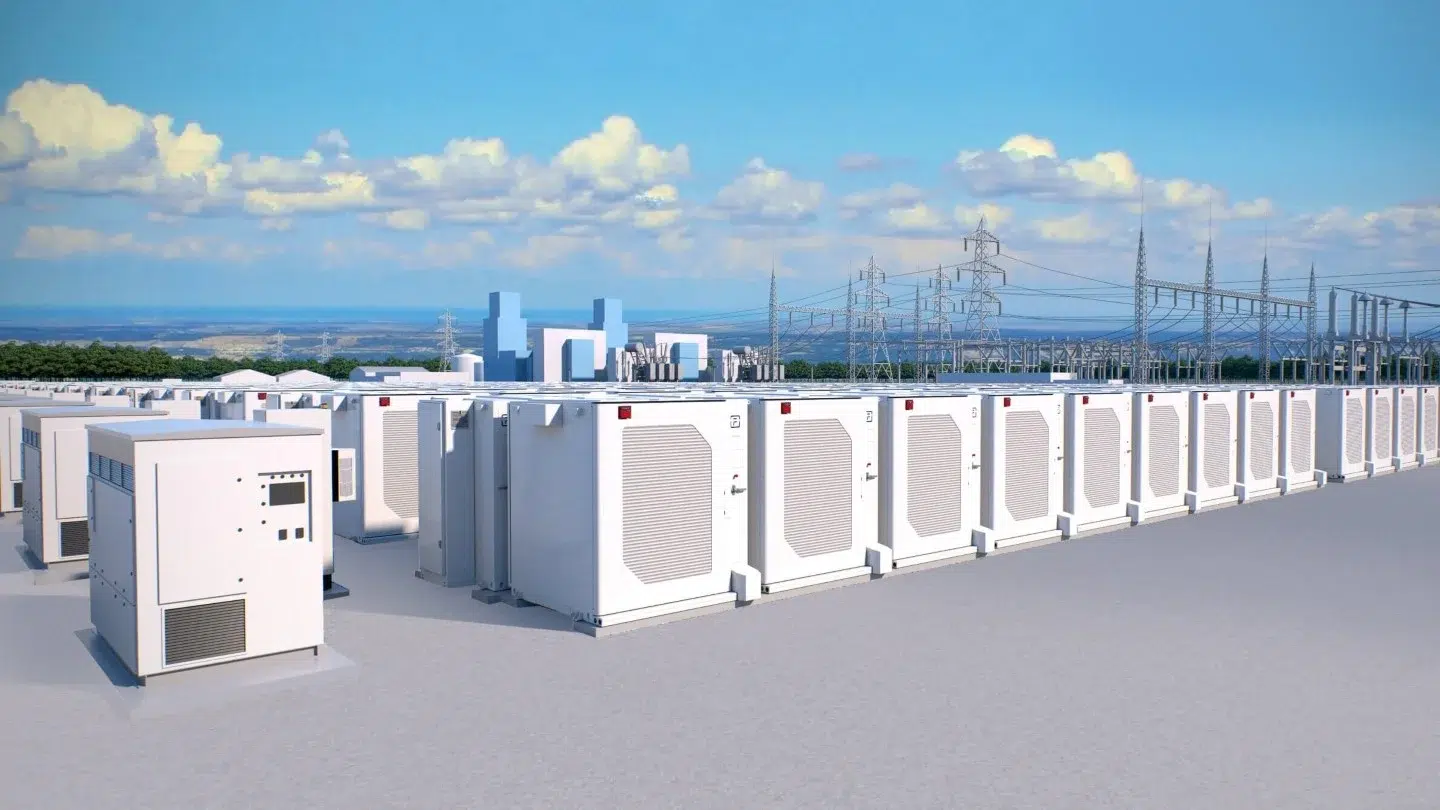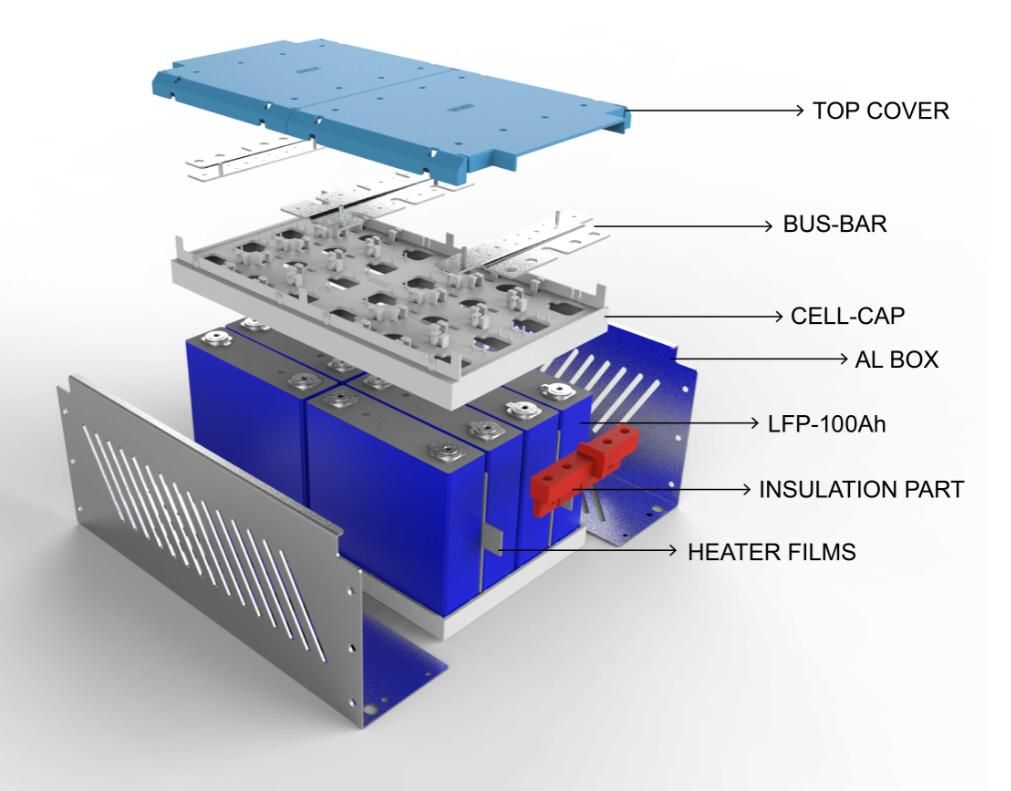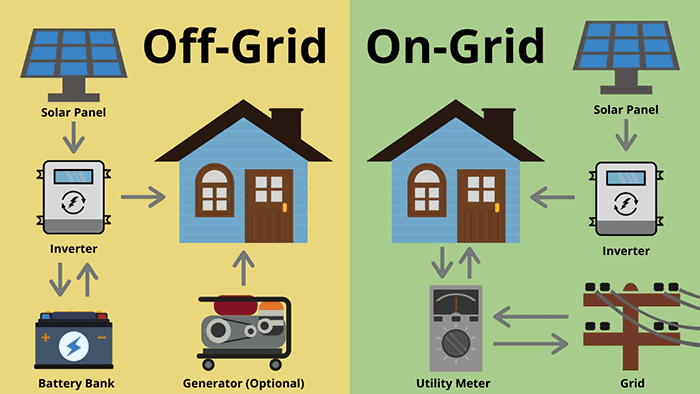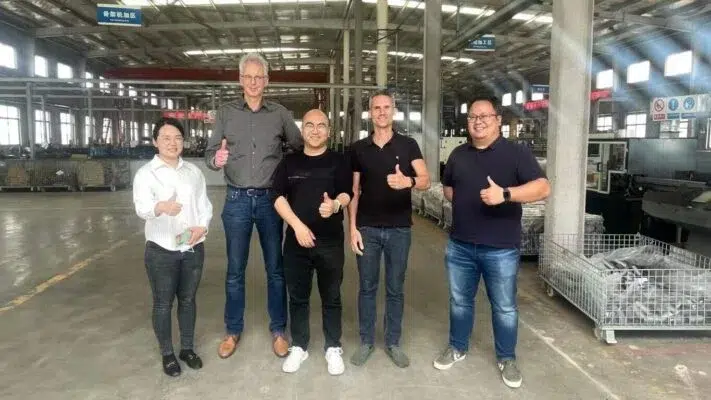
Resumo
Se você não tem certeza de como armazenar energia ou se os métodos de armazenamento atuais são muito caros, Este artigo pode ajudá -lo a entender os sistemas de armazenamento de energia da bateria de maneira abrangente. Cobre o que eles são, o que eles oferecem, seus tipos, vida útil, formulários, e vantagens. Esse conhecimento pode ajudá -lo a escolher uma solução mais adequada para armazenar e otimizar energia.
O que é sistema de armazenamento de energia da bateria(BESS)?
Um sistema de armazenamento de energia da bateria é um método para converter energia elétrica em energia química usando tecnologia de bateria especializada para uso posterior. É uma solução de armazenamento de energia altamente eficiente, especialmente na busca global de hoje de energia verde sustentável. Sua tecnologia está evoluindo continuamente, e suas aplicações estão expandindo, tornando -o uma escolha muito promissora para aplicações de energia.
Sistema de armazenamento de energia de bateria(BESS) Componentes:
Classificação de Bess por tipos de bateria
1. Baterias de íon de lítio
As baterias de íons de lítio funcionam movendo íons de lítio entre eletrodos positivos e negativos. Eles são recarregáveis e conhecidos por sua alta densidade de energia, Design leve, e são comumente usados em dispositivos portáteis, Veículos elétricos, e mais. Eles também são ecológicos e têm alta segurança térmica. Atualmente, sobre 90% de dispositivos no mercado usam baterias de íon de lítio, com modelos comuns, incluindo 12V, 24v, e baterias de íon de lítio de 48V.
2. Baterias ácidas de chumbo-ácido-ácido
As baterias de chumbo-ácido funcionam por uma reação química entre o dióxido de chumbo do material ativo e o ácido sulfúrico no eletrólito. Eles têm um processo simples, baixo custo, mas baixa densidade de energia, Então eles são volumosos e pesados. Eles também exigem inspeção e manutenção regulares.
Como as duas baterias de armazenamento de energia mais comuns, Temos um guia mais abrangente para você ler: “Bateria de lítio versus bateria de chumbo ácido“
3. Baterias de enxofre de sódio
As baterias de enormefur de sódio são baterias de armazenamento de energia de alta eficiência feitas de sódio líquido e enxofre. Eles são econômicos e têm uma longa vida útil. No entanto, Os polissulfetos de sódio são altamente corrosivos e devem ser mantidos longe de oxigênio e água. Eles são usados principalmente em campos de armazenamento de energia, como usinas solares.
Também conhecida como baterias de fluxo de zinco-bromo, Os próprios eletrodos não passam por reações químicas, e o eletrólito é uma solução de água, tornando -os altamente seguros. Eles não contêm metais pesados, Então eles também são uma opção de bateria ecológica. Atualmente, Eles são usados em sistemas de propulsão de navios, barbear de pico de grade de energia, Estações de carregamento de veículos elétricos, Estações base de comunicação, e outros locais.
5. Baterias de fluxo
As baterias líquidas são baterias onde o material do eletrodo e o eletrólito são líquidos. Seu poder e capacidade podem ser projetados especialmente, tornando-os adequados para armazenamento de energia em larga escala. Em termos de aplicativos, Eles são usados nas forças armadas para poder de alto desempenho e poder de backup confiável para mísseis, drones, e outros equipamentos. Em aplicações civis, Eles são usados em dispositivos de segurança, Equipamento de resgate de emergência, e outras áreas.
Módulo de bateria
Como o nome sugere, É um módulo composto de várias células de bateria conectadas de maneiras diferentes, montado junto com equipamentos de proteção e outros componentes.

Cluster de bateria
Consiste em módulos de bateria, sistemas de gerenciamento de bateria, detecção, e componentes de circuito de proteção. O sistema de gerenciamento de bateria é como o cérebro de todo o sistema de bateria, protegendo a bateria contra danos.
Inversor
Um inversor é um dispositivo que altera a corrente direta (CC) eletricidade coletada por painéis solares na corrente alternada (AC) eletricidade usada pelas famílias. Existem diferentes tipos de inversores: Inversores de lanchonete, Inversores fora da grade, e Inversores híbridos.
Inversores de lancho, permitindo que os usuários trocem excesso de energia por créditos em suas contas de eletricidade e impedem o desperdício de energia.
Os inversores fora da rede são adequados para áreas onde o acesso à grade público é difícil, fornecendo independência do principal fornecimento de eletricidade.
Os inversores híbridos combinam recursos de ambos os tipos. Eles podem alimentar energia na grade enquanto também armazenam energia nas baterias para backup, tornando -os versáteis para várias necessidades de energia. Isso mostra como os sistemas de armazenamento de energia da bateria adaptável (BESS) pode ser.

Controladores de carga
Assim como o BMS é o cérebro do sistema de bateria, O controlador pode ser considerado o cérebro de todo o Bess. Impede problemas como sobrecarga e descarga de bateria profunda, coordenar componentes vitais para garantir a operação ordenada do Bess.
Quais são os principais tipos de sistemas de armazenamento de energia da bateria?
Existem dois tipos principais de sistemas de gerenciamento de energia com base em como eles controlam a energia da grade e onde o medidor elétrico está posicionado: Sistemas nos bastidores e sistemas da frente do medidor.
Os clientes podem escolher o tipo de sistema que melhor atende às suas necessidades com base em suas próprias preferências e requisitos.
Ou entre em contato diretamente para fornecer um design profissional do sistema de armazenamento de energia de bateria
Sistemas de bastidores (BTM)
Este termo da indústria refere -se a sistemas de energia usados para residências e edifícios comerciais. Esses sistemas geram e armazenam energia separadamente da grade, Então eles não dependem de medidores elétricos para cálculos. No entanto, Observe que eles são colocados atrás do medidor elétrico, O que não significa que eles estão "fora da rede". Essa configuração permite que a eletricidade seja enviada através da grade quando os painéis solares não estão em uso devido à falta de luz solar, E o faturamento ainda pode confiar na grade durante esses tempos.
Sistemas da frente do medidor (FTM)
Agora é mais fácil entender os sistemas da frente do medidor (Ftm). Estes são sistemas de fonte de alimentação em larga escala, como usinas de energia e parques eólicos. A energia que eles usam precisa passar pelo medidor elétrico antes de ser entregue, Portanto, eles são considerados "na frente" do medidor.
Aplicações de Bess:
Para usuários comerciais e industriais
Mudança de carga
Para entender a mudança de carga, Vamos primeiro entender o que significa "carga elétrica". Simplificando, refere -se às instalações usando eletricidade. Em áreas com diferentes densidades populacionais, O nível de carga elétrica varia muito. A mudança de carga visa reduzir custos e o limite para o consumo durante os horários de pico.
Usando sistemas de armazenamento de energia da bateria (BESS) Para mudança de carga, permite o gerenciamento de energia eficaz e de alta qualidade ao longo do tempo. Por exemplo, Durante os dias ensolarados, quando há energia abundante na grade, pode ser armazenado para uso posterior.
Corte de pico
Durante períodos de alto uso de eletricidade, A rede de energia experimenta pressão. Usando sistemas de armazenamento de energia da bateria (BESS) para atingir o pico de armazenamento de energia de barbear durante esses tempos e liberá -lo quando necessário, Podemos suavizar o pico de demanda, o que ajuda a reduzir os custos de eletricidade.
Flexibilidade
A regulamentação de Bess é flexível, significando que é gerenciável no armazenamento e liberação de energia, E é versátil em seu próprio uso. Pode ser emparelhado com vários tipos de inversores, incluindo grade amarrada, fora da rede, e especialmente híbridos. Ele pode facilmente se adaptar às necessidades dos usuários em relação às demandas de grade e custos de consumo.
Para usuários residenciais
Auto -consumo
Usuários individuais podem tornar suas vidas mais convenientes. Por exemplo, Enquanto eles estão no trabalho durante o dia, Suas casas podem armazenar energia solar, que eles podem usar para alimentar seus dispositivos domésticos à noite através do sistema de armazenamento de energia. Isso ajuda a reduzir suas contas de energia.
Saindo da grade
Desconectando -se completamente da grade é uma solução de energia sustentável de backup, especialmente em áreas remotas. É também a escolha preferida para os clientes que buscam independência em suas necessidades de energia.

Vantagens do sistema de armazenamento de energia da bateria
Ganhos ambientais
A razão pela qual buscamos energia verde ao lado de recursos não renováveis é porque o último pode prejudicar o ambiente. Energia solar, energia eólica, e recursos naturais semelhantes são as melhores fontes de energia. A energia energética renovável pode efetivamente reduzir a poluição e contribuir para a proteção ambiental.
Custos de energia mais baixos
Usando Bess, Empregando vários métodos de aplicação, reduz o custo de consumo durante o pico de uso de eletricidade, aumentar a eficiência energética, em última análise, leva a um custo menor. Você não precisa se preocupar em impactar a qualidade do uso ou experimentar quedas de energia, como opera o tempo todo.
Menos dependente da grade
Por exemplo, para compensar o consumo de recursos não renováveis, A sociedade começou a desenvolver e pesquisar a aplicação de recursos renováveis. Bess também pode reduzir efetivamente a dependência das famílias na grade de energia. Durante o pico de uso de eletricidade, Fatores relacionados ao clima, e outras circunstâncias, Bess pode garantir uma fonte de alimentação consistente e estável. Você também pode aprender mais sobre Por que as baterias solares são a melhor escolha para suas necessidades fora da rede.
Quanto tempo dura a vida útil de um sistema de armazenamento de energia da bateria?
Geralmente, A vida útil de Bess varia de 5 para 15 anos, E existem muitos fatores que podem afetar sua vida útil, como o tipo de bateria de armazenamento usada e a temperatura do ambiente operacional. Para prolongar a vida útil de Bess, Você pode controlar a temperatura usando materiais de isolamento, Limpe e inspecione regularmente o equipamento para problemas. Reparos oportunos e substituições de peças também são cruciais.
Os esforços da GYCX neste campo
GYCX é um especialista da indústria de um balcão único. Controlamos rigorosamente nossos produtos e conduzimos inspeções no local de nossos fornecedores. Fornecer serviços de ponta a ponta de alta qualidade aos nossos clientes é a nossa filosofia fundamental da marca. Escolha -nos, e da consulta a pós-venda, Você terá uma experiência perfeita. Seremos seu parceiro profissional a cada passo do caminho.

Se você precisar de algum serviço relacionado, Sinta -se à vontade para Contate-nos a qualquer momento. Vamos projetar uma solução que atenda perfeitamente às suas necessidades. Não hesite!
A colaboração começa agora.
Talvez você queira aprender mais:
1.Quanto tempo dura os painéis solares? (2024 guia)
2.Manutenção do painel solar: 2024 Guia final
3.Os painéis solares me pouparão dinheiro?
